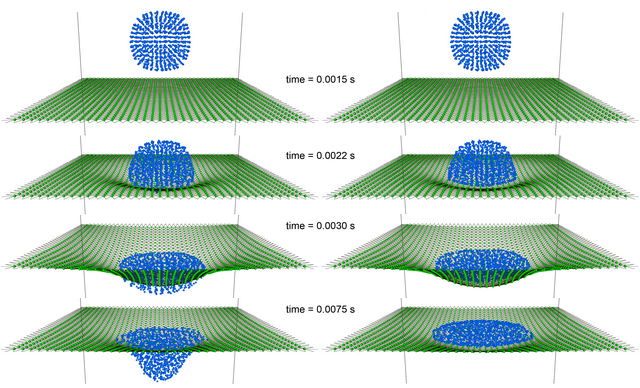热门问题
时间线
聊天
视角
光滑粒子流體動力學
来自维基百科,自由的百科全书
Remove ads
光滑粒子流體動力學(英語:smoothed-particle hydrodynamics, SPH)是一種用於模擬連續介質動力學的計算方法,如固體力學和流體流動。 它由Gingold和Monaghan(1977)和Lucy(1977)提出,最初用於天體物理問題。 此方法已被用於許多研究領域,包括天體物理學,彈道學,火山學和海洋學。 它是一種無網格的拉格朗日方法(即坐標系與流體一起移動),並且方法的解像度可以容易地相對於諸如密度的變量進行調整。


方法
光滑粒子流體動力學方法將連續流體分成一組稱為粒子的離散元素。 這些粒子具有空間距離(稱為「光滑長度」,通常由h表示),攜帶了其所在位置的流體的性質,如質量、密度、速度、能量等。
參考資料
- Gingold, R. A.; Monaghan, J. J. Smoothed particle hydrodynamics: theory and application to non-spherical stars. Monthly Notices of the Royal Astronomical Society (Oxford University Press (OUP)). 1977, 181 (3): 375–389 [2017-05-05]. doi:10.1093/mnras/181.3.375.
- Lucy, L. B. A numerical approach to the testing of the fission hypothesis. The Astronomical Journal (IOP Publishing). 1977, 82: 1013 [2017-05-05]. doi:10.1086/112164.
- 劉, 桂榮. 光滑粒子流体动力学: 一种无网格粒子法. 湖南大學出版社. 2005. ISBN 9787810539982.
Remove ads
Wikiwand - on
Seamless Wikipedia browsing. On steroids.
Remove ads
